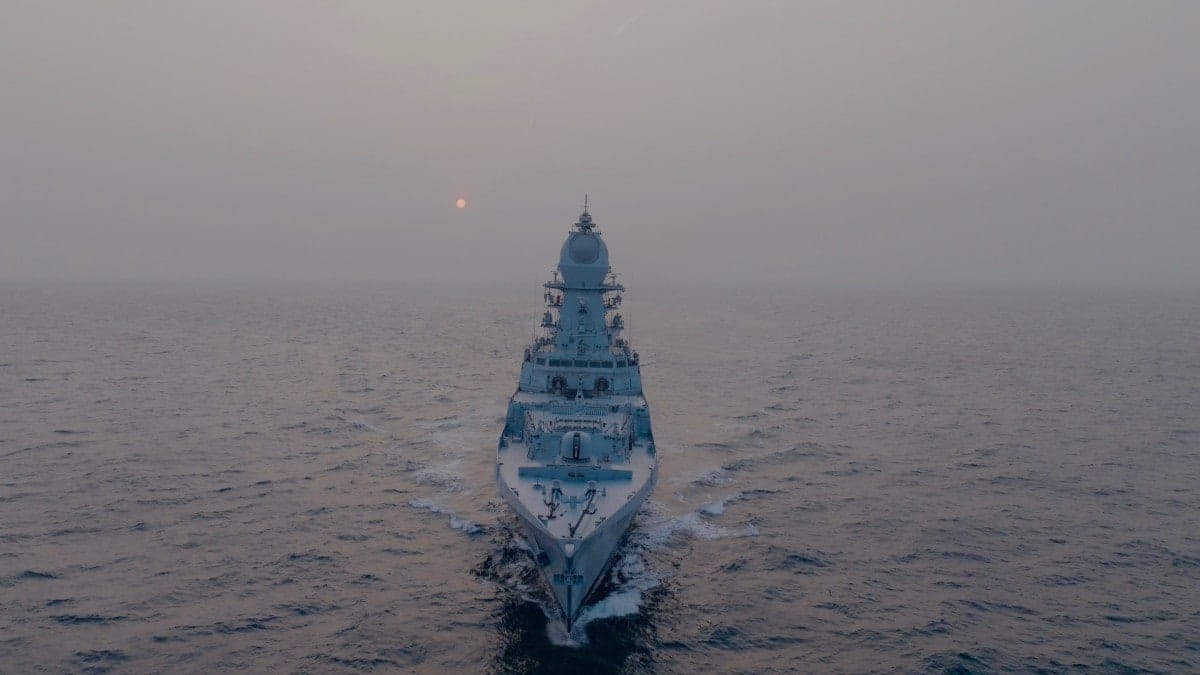INS Surat: A New Era for Indian Navy

In a remarkable development, the Indian Navy is set to commission three significant combat platforms on January 15, 2025. This event will take place at the Naval Dockyard in Mumbai. The guided missile stealth destroyer INS Surat, the guided missile stealth frigate INS Nilgiri, and the diesel submarine INS Vaghsheer will all enter naval service on this landmark day. Each of these vessels has successfully completed its pre-commissioning trials and has been built indigenously at Mazagon Dock Limited (MDL) in Mumbai. This commissioning marks a significant milestone for the Indian Navy, showcasing the country’s growing capabilities in indigenous shipbuilding and enhancing its combat potential.
INS Surat: A Technological Marvel
INS Surat (Yard 12707) is the last of the Project 15 destroyers, a program initiated by the Indian Navy in the early 1990s. Over nearly three decades, ten ships have been constructed, all named after major Indian cities. This includes ships from the Project 15, Project 15A, and Project 15B schemes. The journey of India’s indigenous warship building began with the small ship INS Ajay in 1960 and has evolved significantly over the years. The Project 15 destroyers represent a leap in technology, with their form, firepower, and weapon-sensor mix now comparable to global standards.
INS Surat is a formidable vessel, boasting a displacement of 7,400 tonnes and an overall length of 164 meters. This makes her nearly the size of a cruiser. She is equipped with cutting-edge technology, including surface-to-air missiles, anti-ship missiles, and advanced guns. Powered by four gas turbines, she can reach speeds exceeding 30 knots and has an operational range of over 7,500 kilometers. The ship’s design incorporates stealth features, enhancing her combat effectiveness. Additionally, she can operate two multi-role helicopters and unmanned aerial vehicles, providing tactical flexibility.
INS Surat is also outfitted with state-of-the-art sensors, including radars and electronic warfare systems. These advanced technologies enable superior situational awareness and networking capabilities. The ship features a high degree of automation, with systems that allow for centralized control and monitoring of machinery. Notably, she is set to be the first AI-enabled warship in the Indian Navy, utilizing indigenous AI solutions. This combination of advanced technology and indigenous design underscores India’s commitment to self-reliance in defense manufacturing.
Historical Significance of INS Surat
The name “Surat” carries deep historical significance. The city of Surat has long been a pivotal hub for maritime trade, with a rich legacy in shipbuilding. Its prominence as a port dates back to the medieval era, when it was coveted by various rulers, including the Mughals and the British. The British East India Company established its presence in Surat in the early 17th century, marking the beginning of a new chapter in India’s maritime history.
Surat’s historical importance is reflected in the ship’s design, which features a pentagonal crest depicting the iconic Hazira Lighthouse and the Asiatic lion, the state animal of Gujarat. The lighthouse symbolizes longevity and vigilance at sea, while the lion represents strength and ferocity. The construction of INS Surat at Mazagon Docks and its commissioning at the Naval Dockyard in Mumbai highlight the intertwined destinies of Surat and Mumbai, two cities that have played crucial roles in India’s maritime narrative.
Today, Surat is recognized as a diamond and textile hub, symbolizing India’s economic growth. The commissioning of INS Surat not only honors the city’s maritime heritage but also reinforces its ongoing relevance in India’s naval strategy. This ship is a testament to the historical journey from colonial rule to self-reliance, embodying the spirit of modern India. The legacy of shipbuilding in Surat, combined with the advanced capabilities of INS Surat, marks a significant step forward for the Indian Navy.
A New Chapter for the Indian Navy
INS Surat stands as one of the largest and most technologically advanced destroyers globally. Its superior firepower and network-centric capabilities make it an ideal command platform for fleet operations. The ship’s automation and advanced systems rival the best in the world, enhancing the operational capabilities of the Indian Navy.
The commissioning of INS Surat, along with INS Nilgiri and INS Vaghsheer, represents a significant milestone for India. It showcases the success of the indigenous shipbuilding program and the collaborative efforts of various stakeholders, including the Indian Navy, Mazagon Dock, and numerous equipment manufacturers. This event is not just a celebration of technological achievement but also a recognition of India’s maritime heritage and the spirit of self-reliance.
As INS Surat prepares to embark on its missions, it symbolizes a resurgent India ready to defend its maritime interests. The commissioning of this destroyer is indeed a red-letter day for the Indian Navy, marking the dawn of a new era in India’s naval capabilities.
